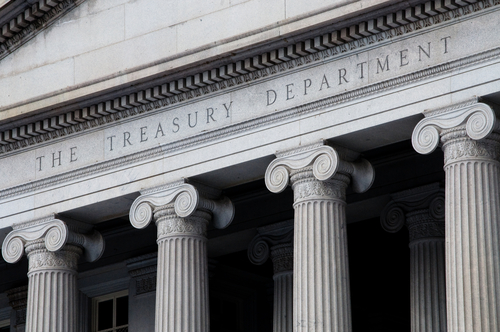The Securities and Exchange Commission (SEC) adopted rule changes this week that seek to improve risk management practices for central counterparties in the U.S. Treasury market.

The rule changes update the membership standards required of covered clearing agencies for the U.S. Treasury market related to a member’s clearance and settlement of specified secondary market transactions. Overall, the rule changes are designed to reduce the risks faced by a clearing agency and incentivize and facilitate additional central clearing in the U.S. Treasury market.
“The $26 trillion Treasury market — the deepest, most liquid market in the world — is the base upon which so much of our capital markets are built,” SEC Chair Gary Gensler said. “Having such a significant portion of the Treasury markets uncleared — 70 to 80 percent of the Treasury funding market and at least 80 percent of the cash markets — increases system-wide risk. Today’s adopting release addresses clearing of Treasury securities in two important ways. First, the final rules make changes to enhance customer clearing. Second, the final rules broaden the scope of which transactions clearinghouse members must clear. I am pleased to support these rules because they will help to make the Treasury market more efficient, competitive, and resilient.”
Specifically, the amendments require that covered clearing agencies in the U.S. Treasury market adopt policies and procedures designed to require their members to submit for clearing certain specified secondary market transactions.
These transactions include: all repurchase and reverse repurchase agreements collateralized by U.S. Treasury securities entered into by a member of the covered clearing agency (with some exceptions); all purchase and sale transactions entered into by a member of the clearing agency that is an interdealer broker; and all purchase and sale transactions entered into between a clearing agency member and either a registered broker dealer, a government securities broker, a government securities dealer.
Also, the amendments permit broker-dealers to include customer margin required and on deposit at a clearing agency in the U.S. Treasury market as a debit in the customer reserve formula, subject to certain conditions.
Further, the amendments require covered clearing agencies in this market to collect and calculate margin for house and customer transactions separately.
Finally, the amendments require policies and procedures designed to ensure that the covered clearing agency has appropriate means to facilitate access to clearing, including for indirect participants.
The changes regarding the separation of house and customer margin, the broker-dealer customer protection rule, and access to central clearing are required to be completed by March 31, 2025.
Compliance by the direct participants of a U.S. Treasury securities central clearing agencies with the requirement to clear eligible secondary market transactions would not be required until Dec. 31, 2025, and June 30, 2026, respectively, for cash and repurchase transactions.